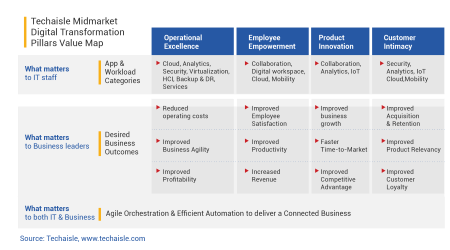Recently concluded HPE Discover was different than most other analyst events in more ways than one. First, HPE announced that it has strategically dived into the cloud swim-lane with a confident commitment to offer “everything-as-a-service” by 2022. HPE has plans to offer entire portfolio through a range of subscription, pay-per-use and consumption driven offerings. It is a bold strategy and in direct contrast to its key competitors. Second, the phrase “doubling down” on SMB and midmarket segments was not only mentioned in the HPE Global Partner Summit on the mainstage, but also in the keynote address by Antonio Neri as well as by several senior leaders in their respective breakout sessions thereby targeting SMBs as a priority market segment.
Specifically, “everything as a service” or XaaS is a very astute strategy. As we near the end this decade, it is clear that the IT industry as a whole has been transformed by cloud - by the way it alters IT service delivery options, by the way it impacts the economics & resource requirements associated with that delivery, and by the applications and business opportunities that cloud unlocks for user organizations of all sizes and in all industries. We are increasingly immersed in a post-transactional market, where discrete sales of individual products or integrated systems are replaced by agreements to provide IT capacity and business functionality “as-a-Service.”
No segment of the IT market is immune to this trend. Sales of on-premise hardware and software are declining and will continue to decline; at the same time, leading web service providers, including Microsoft (Azure), Amazon Web Services, Facebook, Google and Alibaba, are building 40 percent – 50 percent of all x86 servers for internal use, and then providing access to these servers on a pay-as-you-go basis, and software developers are creating systems on these platforms to automate sales, marketing, finance, HR and other business functions.
Inexorably, the market is shifting from one defined by discrete purchase-and-deploy deals aligned with refresh cycles to one where businesses take a hybrid approach that blends a limited number of on-premise assets with a growing range of on-demand services. Although hybrid IT is inherently a more flexible and efficient way of providing IT services needed by businesses, it still requires effective planning to address important issues within business operations. There are many different types of hybrid IT solutions, but they all belong to one of three basic types: Solutions that respond to IT department needs, and are adopted by IT professionals; Solutions that address business management needs, where demand is driven by non-IT executives or staff members; Solutions that change both business processes and IT systems, and which require IT/business management collaboration for effective delivery. And these are the hybrid market segments that HPE plans to address.
But Antonio Neri’s ambition is far bolder and greater than simply pivoting to an XaaS business model. His promise is for a zero-friction future in a cloud-less world for all segments of the market. A strong foundation has been laid with HPE GreenLake, an outcome of its acquisition of Cloud Cruiser in 2017. At HPE Discover, HPE extended its GreenLake offerings for the midmarket to enable quick deployments of workloads with right sized and ready to go storage, compute and virtualization. For midmarket firms which do not own and manage their own data centers, HPE has partnered with Equinix and CyrusOne to offer co-location solutions. To help its channel partners that serve the midmarket segment, HPE has developed a new quoting tool that reduces quote time from 18 hours to 15 minutes. In addition, HPE also announced the availability of HPE GreenLake Chatbot - an artificial intelligence driven, automated chatbot that quickly answers partners' HPE GreenLake inquiries.















